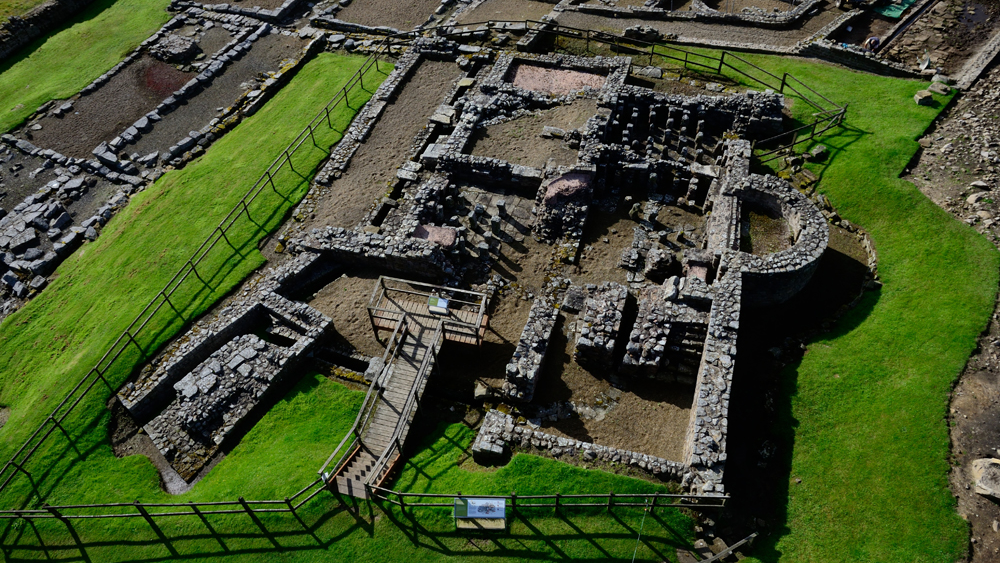Photos: Coronavirus field hospitals across the US
Field hospitals are being set up across the United States to deal with a health care system that appears to be already bursting at the seams due to the surge of patients infected with the novel coronavirus. Event centers like the Javits Center in New York City and CenturyLink in Seattle are being converted into hospitals; Field tents are being set up in Central Park in New York City; and a fairground in Miami-Dade county is being turned into a makeshift hospital. Here's a look at how organizations and the U.S. military are coming together to try to ensure those infected with SARS-CoV-2 can get necessary treatment.
Central Park tents
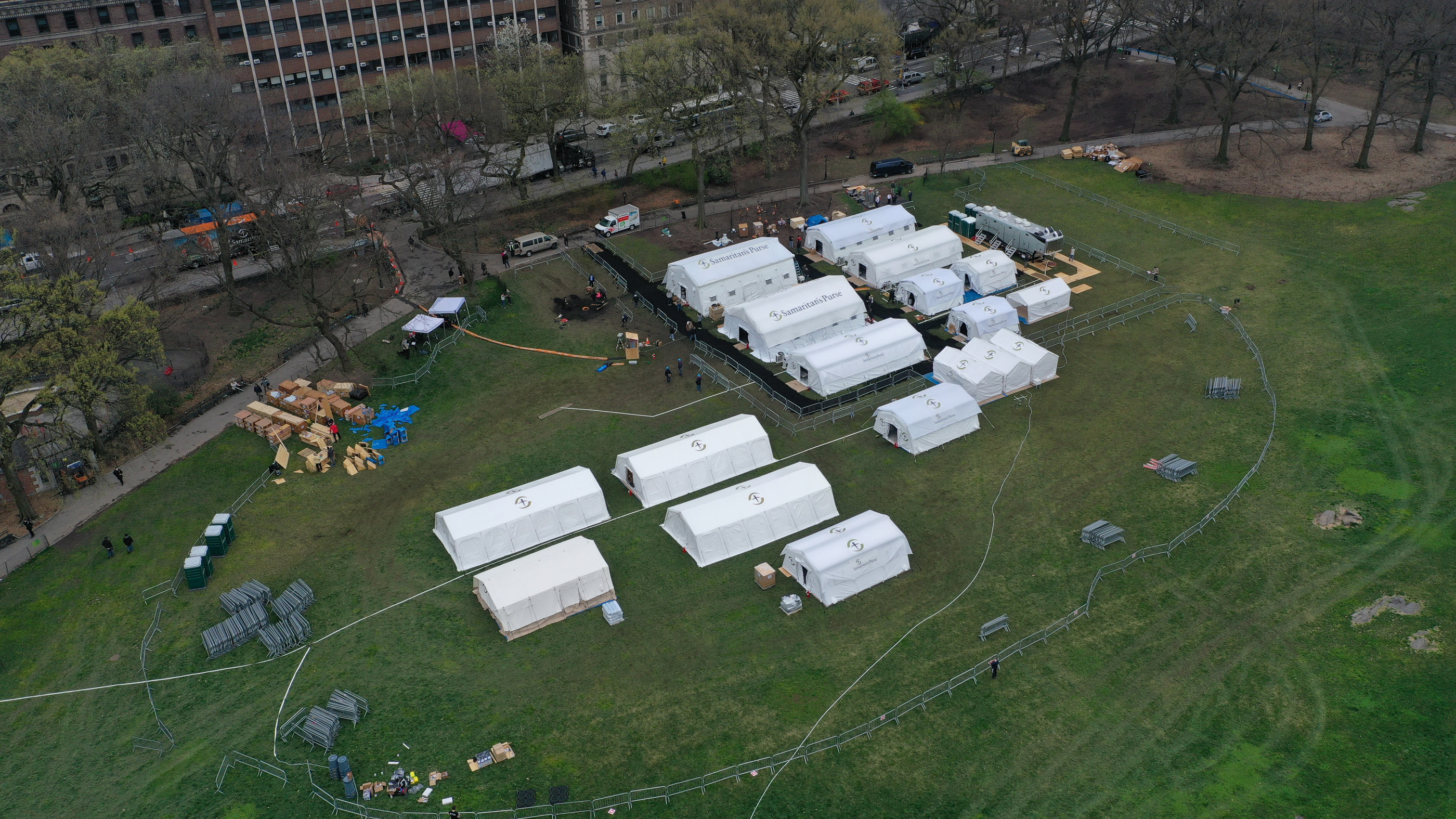
The field hospital in Central Park in New York City will be used to treat “overflow” patients from the nearby Mount Sinai hospitals. The tents will hold 68 beds and 10 ICU beds, according to NY1. The facility opened Tuesday (March 31).
Inside Central Park field hospital

Another view Inside a makeshift temporary hospital at Central Park East Meadow in New York City, on March 30, 2020.
Makeshift hospital rooms
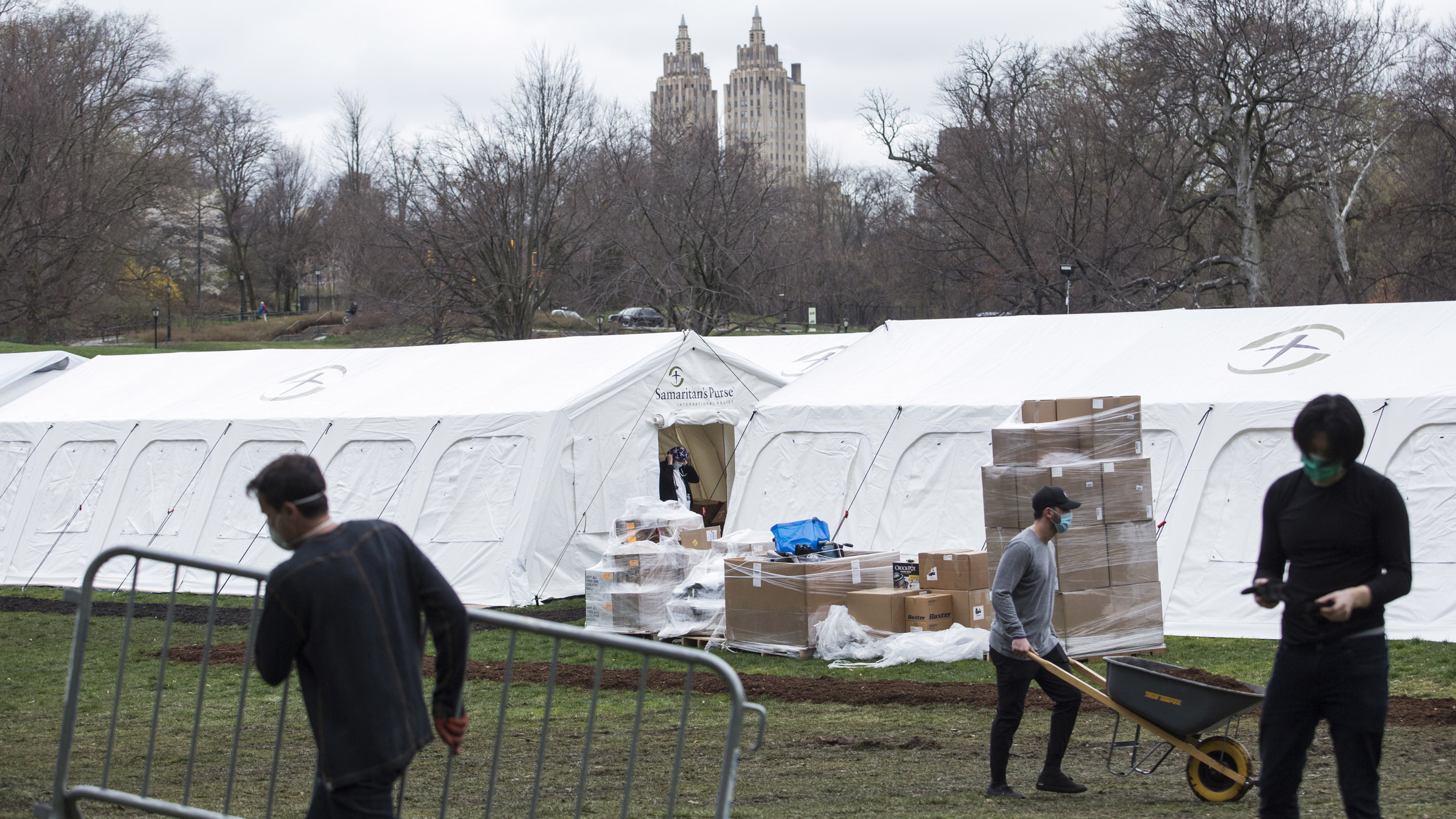
Volunteers from the international Christian aid organization Samaritan’s Purse set up an emergency field hospital for coronavirus patients in Central Park, near Fifth Avenue and East 99th Street, in New York City on March 31, 2020.
Respiratory care units
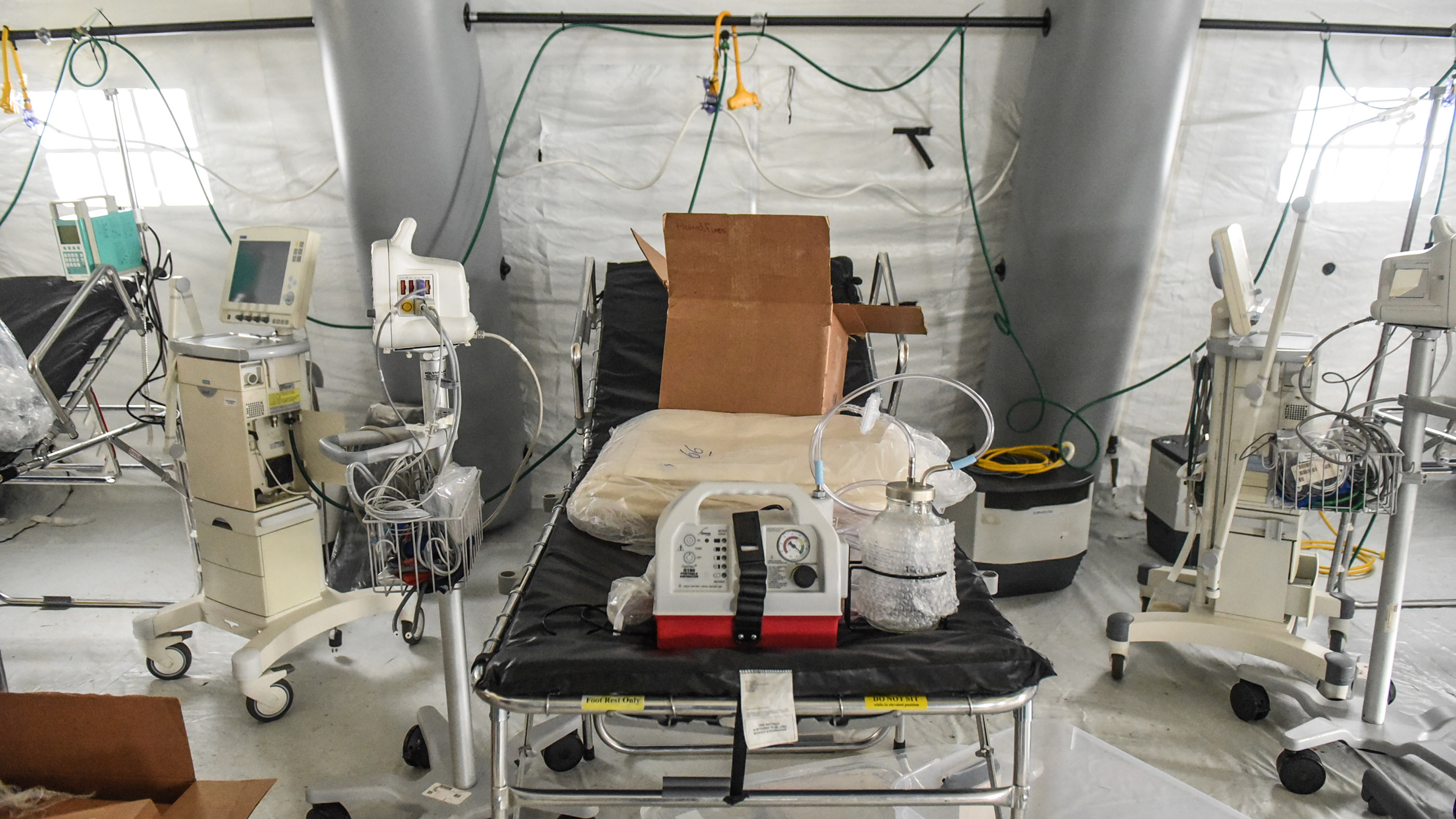
A ventilator and other hospital equipment can be seen here at an emergency field hospital in Central Park on March 30, 2020, in New York City. The hospital “rooms” will be equipped to serve as a respiratory care unit, which will be run by Mount Sinai Hospital.
California National Guard
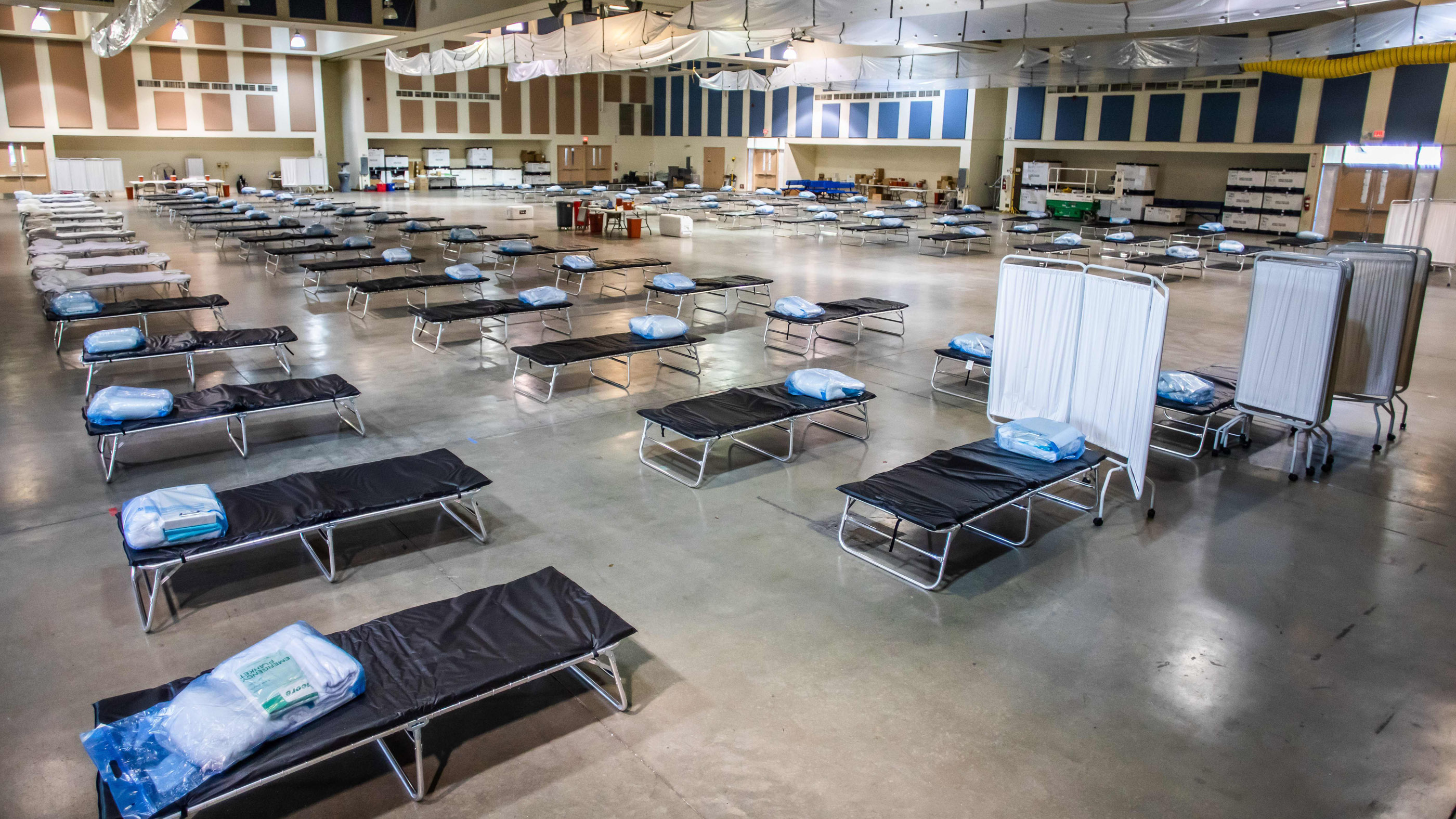
The California National Guard is setting up a temporary hospital in Indio, California, on March 29, 2020. The new field hospital will house 125 beds, helping to ease the burden on the local hospital system amid the growing COVID-19 pandemic.
Seattle field hospital
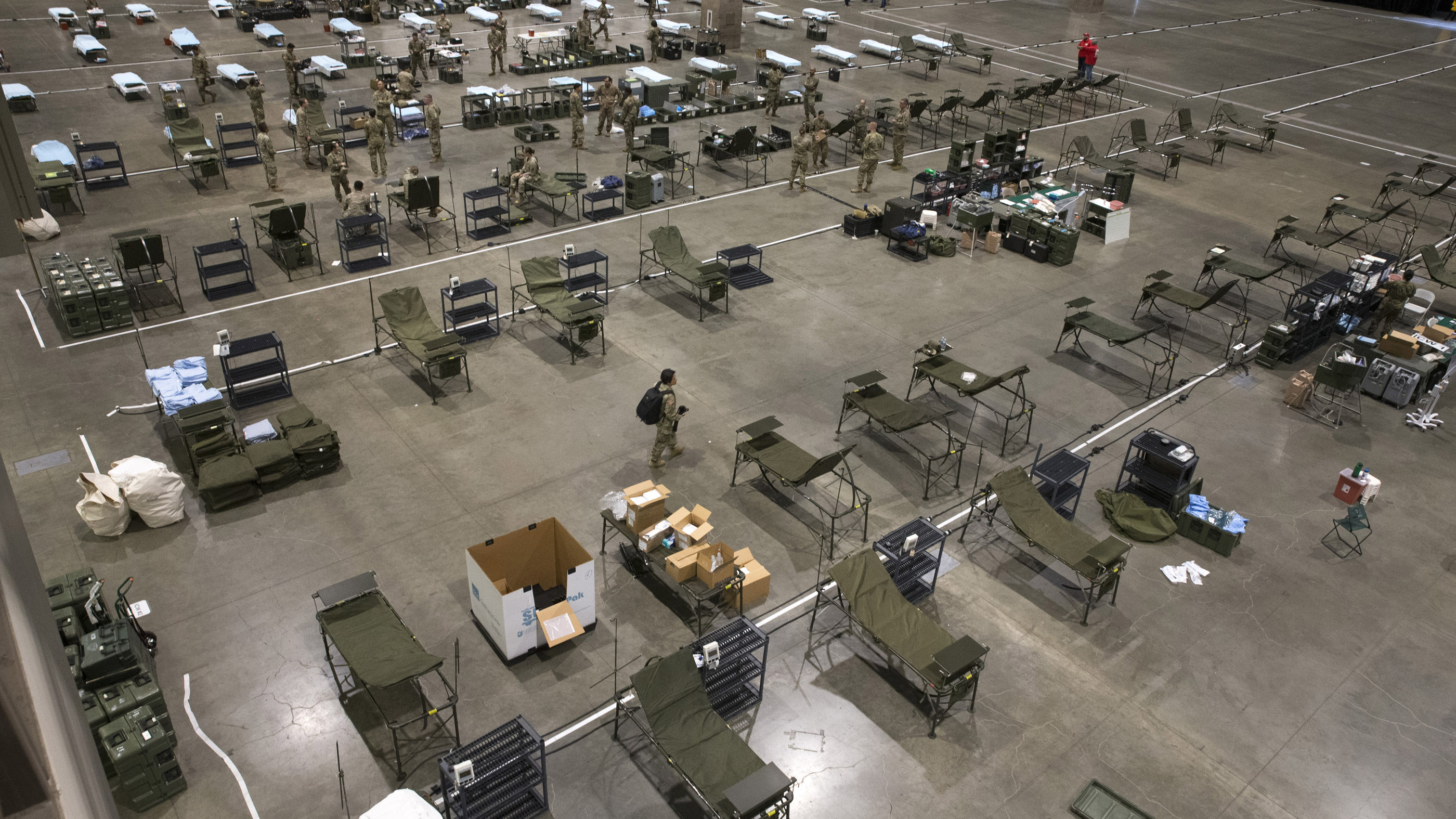
Military personnel set up the 627th Hospital Center field hospital at CenturyLink Event Center on March 31, 2020, in Seattle, Washington. The hospital, which will house 250 beds, will be ready for non-COVID-19 patients.
Get the world’s most fascinating discoveries delivered straight to your inbox.
Field hospital medical equipment
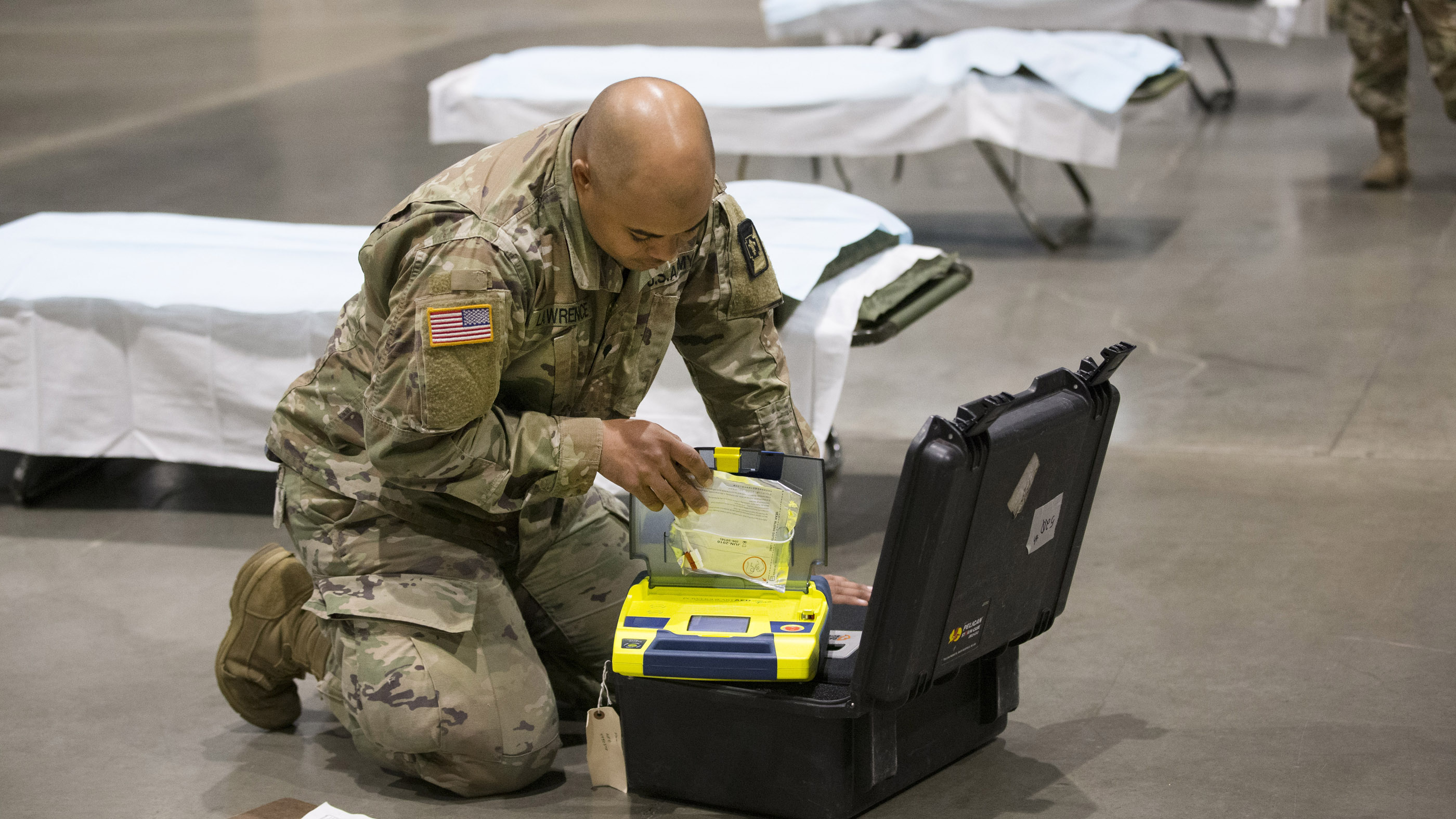
Military personnel, such as Brandon Lawrence from Tacoma, Washington, who is checking the battery on an automated external defibrillator, set up the 627th Hospital Center field hospital at CenturyLink Event Center on March 31, 2020. When complete, the hospital will have the capability of a normal hospital including an operating room, intensive care units, X-rays and more.
Javits Center supplies
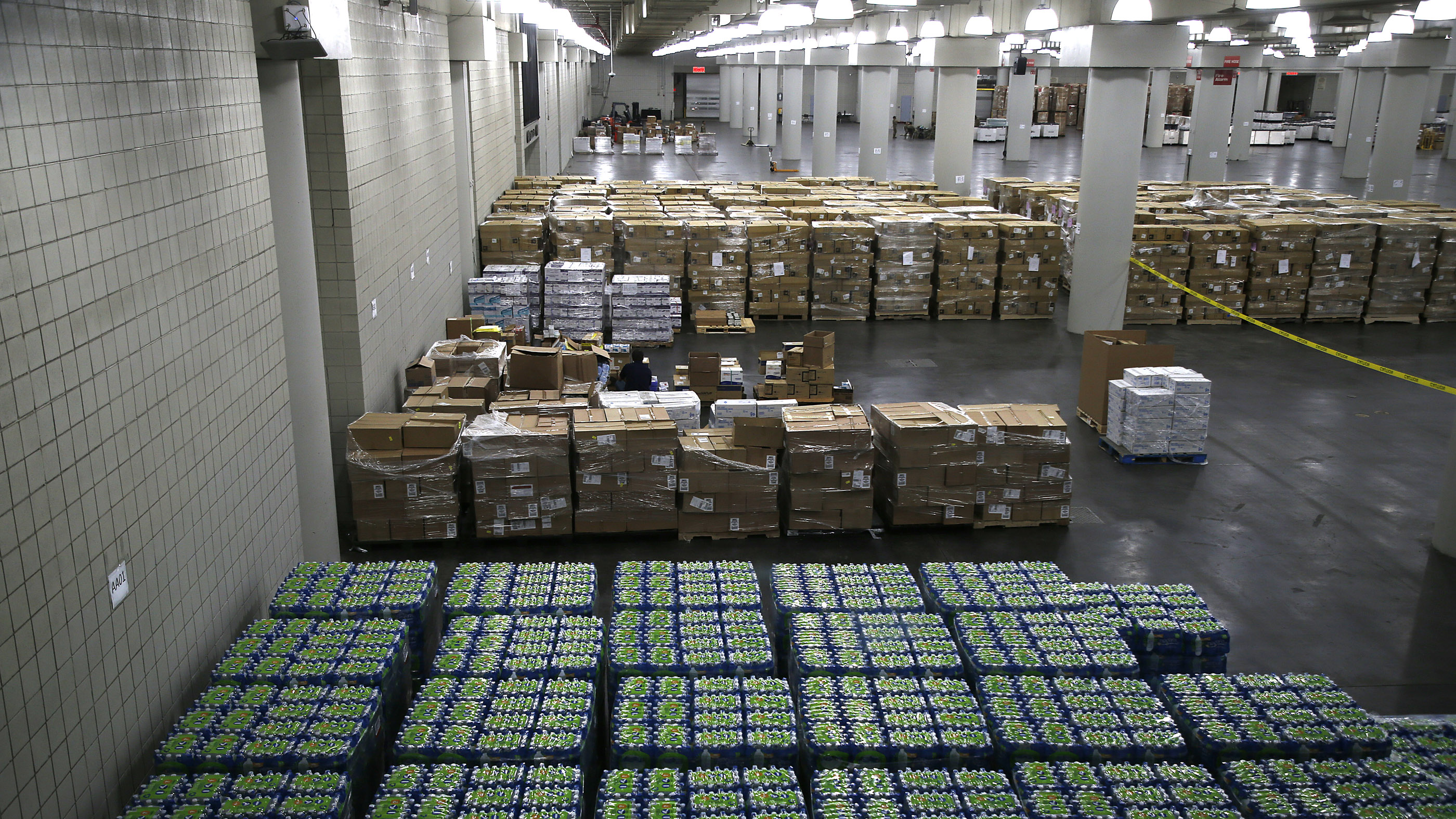
Supplies are amassed in the Army Corps of Engineers temporary field hospital at Jacob Javits Convention Center in New York City, on March 30, 2020.
Javits Center field hospital
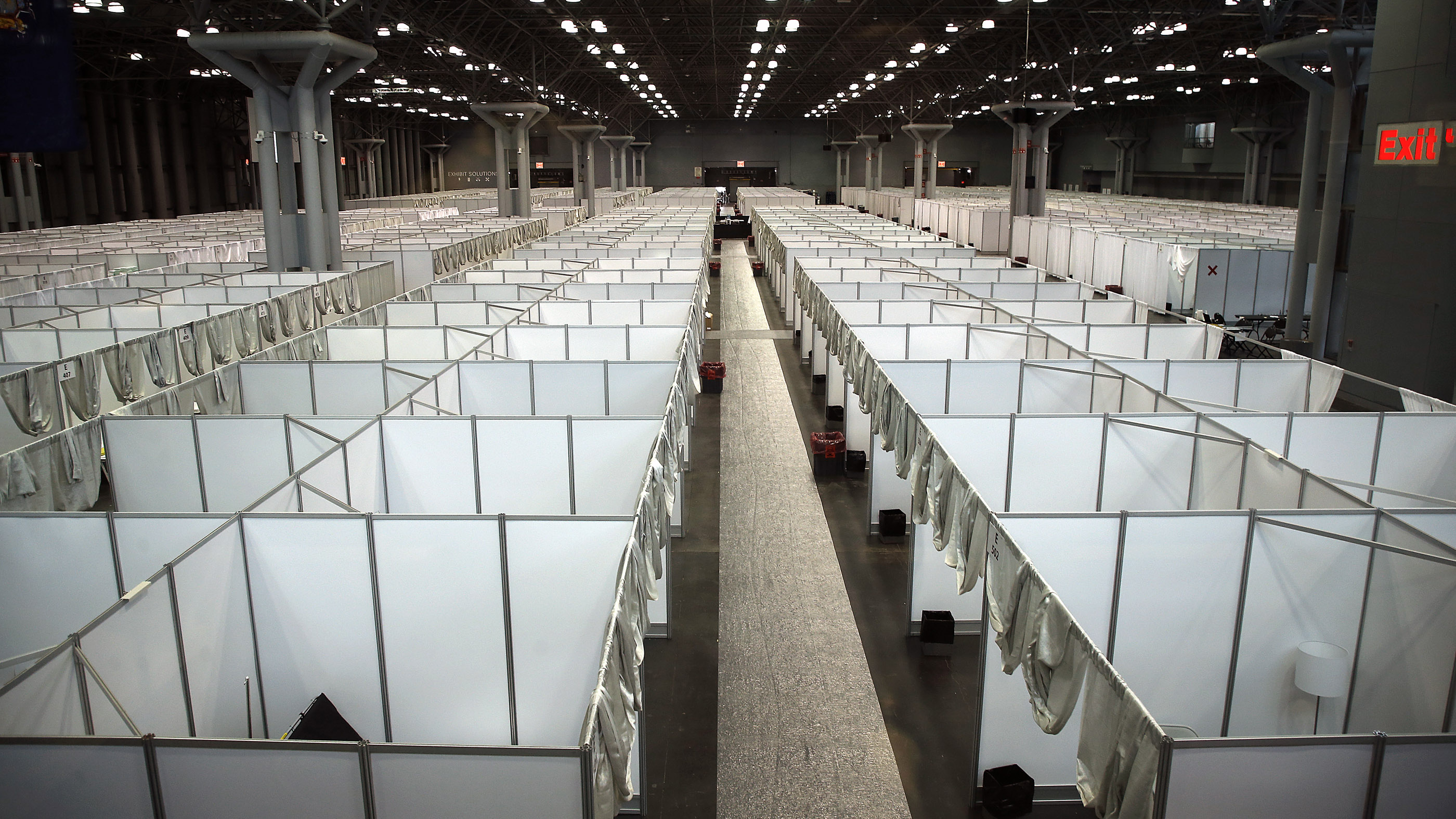
The temporary field hospital at New York City’s Javits Center was built to help ease the burden on the city’s hospitals, many of which are now overwhelmed with COVID-19 patients.
Miami's makeshift hospital
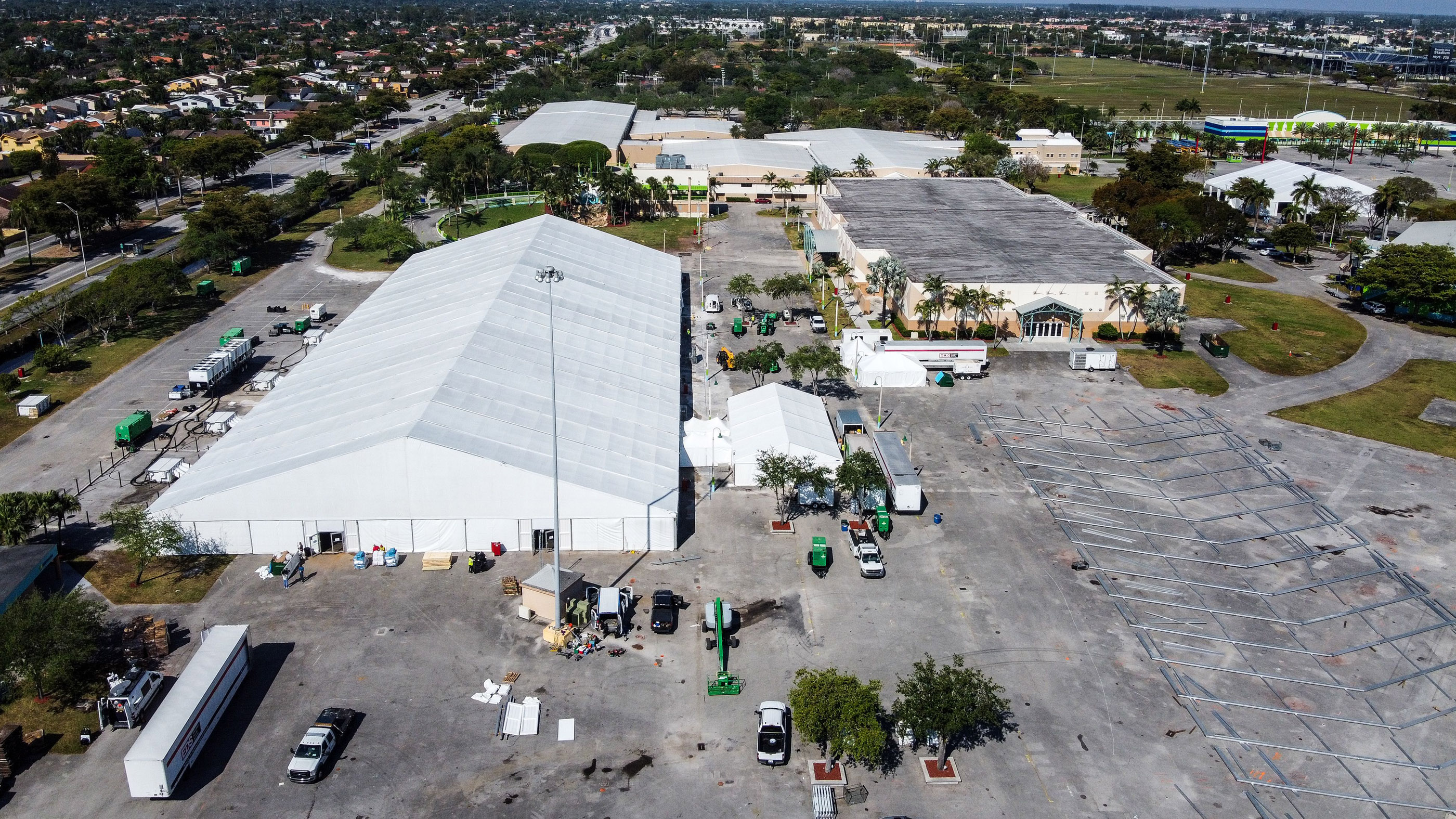
This aerial view shows a makeshift field hospital being constructed at the Miami-Dade County fairground in Miami, Florida, on March 26, 2020.
COVID-19 in Miami
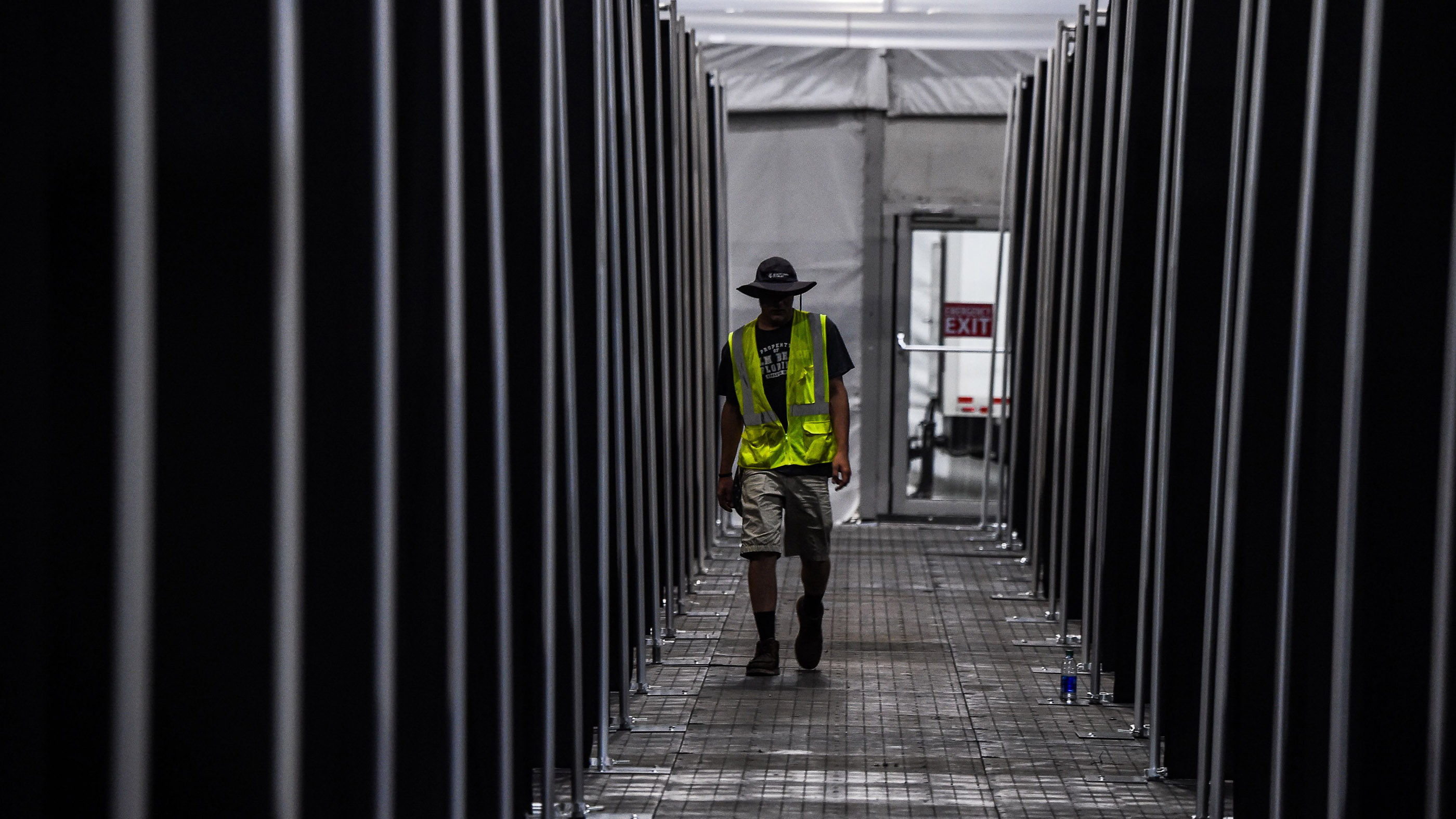
A construction crew member walks inside a makeshift field hospital at Miami-Dade County fairground. The hospital will hold 250 beds and is being built in anticipation of a surge in coronavirus cases.
Coronavirus science and news
- Coronavirus: Live updates
- What are coronavirus symptoms?
- How deadly is the new coronavirus?
- How long does coronavirus last on surfaces?
- Is there a cure for COVID-19?
- How does coronavirus compare with seasonal flu?
- How does the coronavirus spread?
- Can people spread the coronavirus after they recover?
Originally published on Live Science.
The one-month trial gives you access to all of the educational site's 9,000 activities in reading, science, math and art. Keep your child busy and learning while we are all stuck indoors.
Jeanna Bryner is managing editor of Scientific American. Previously she was editor in chief of Live Science and, prior to that, an editor at Scholastic's Science World magazine. Bryner has an English degree from Salisbury University, a master's degree in biogeochemistry and environmental sciences from the University of Maryland and a graduate science journalism degree from New York University. She has worked as a biologist in Florida, where she monitored wetlands and did field surveys for endangered species, including the gorgeous Florida Scrub Jay. She also received an ocean sciences journalism fellowship from the Woods Hole Oceanographic Institution. She is a firm believer that science is for everyone and that just about everything can be viewed through the lens of science.



